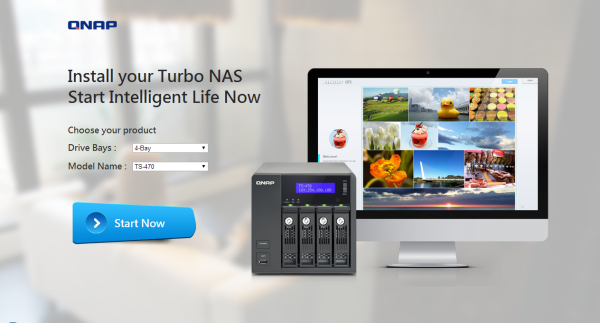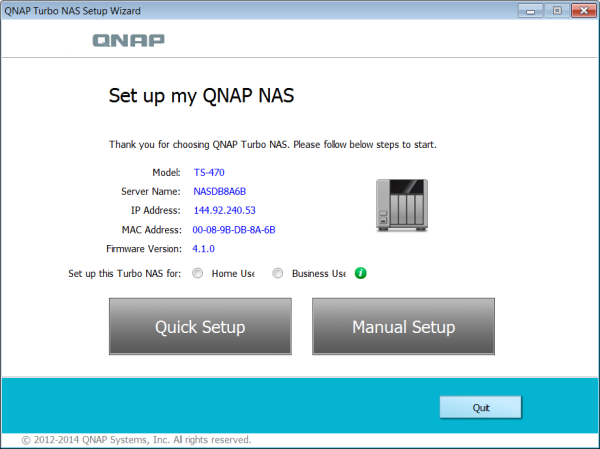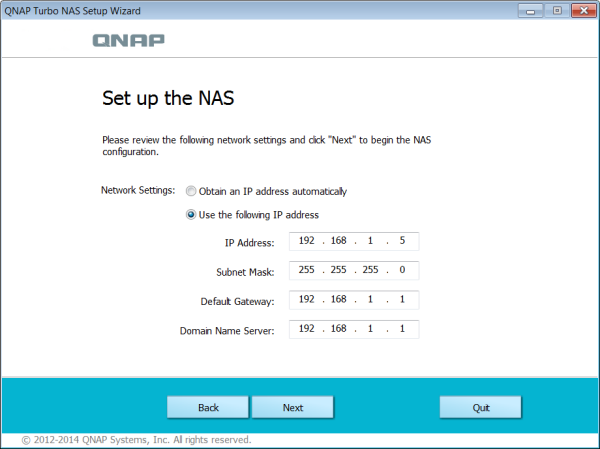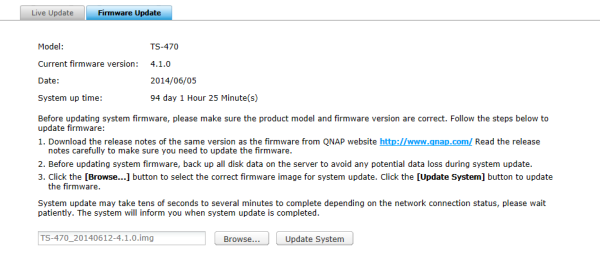Before using the TS-470 you will need to install a couple of hard drives or SSDs. To begin, remove the four trays from the device and fasten the drives to them using the included screws. When you are done, slide the trays back into their corresponding slots on the TS-470 and lock them into place by pushing down firmly on the levers.

With the hard drives installed, you can now connect the network cable and power cord and turn the TS-470 on. The server will beep once and then after another 2-3 minutes it will beep again, indicating that it has started up successfully.
Next, you will need to install and configure the software. With the TS-470 this can be done through QNAP's cloud or by using the software on the included CD-ROM. If you decide to do a cloud installation, you will need the device's "Cloud Key" which is printed on a sticker located on the top of the NAS. Alternatively, you can scan the QR Code located next to the "Cloud Key" with an iOS or Android device to begin installation.

If you choose to do a local installation, you'll need to pop the CD-ROM into your computer and install the QNAP Qfinder software. Like its name suggests, the Qfinder searches the network looking for QNAP NAS devices. When it finds one, it will display its name, IP address, myQNAPCloud device name, server type, firmware version and MAC address.

If your device is not configured, Qfinder will automatically launch the quick setup wizard. The wizard gives you the option to do a quick or manual setup. Using the quick setup you can specify the name of the NAS and enter admin password. If you need to configure the disks or change the network settings, the manual setup is the way to go.





With the network interface configured, you can access the TS-470's web-based user interface by entering its IP address into your web browser's address bar. Initially, you will need to login using the default administrator account.

QTS 4.1 is a big step up over QNAP's previous Turbo NAS operating systems. This customizable, multi-window GUI is easy to navigate and lets you do multiple tasks at once. From within the Control Panel, you can manage storage, set user privileges, configure the network services, and use the various business applications to perform backups to another server, external hard drive or cloud based service.


QNAP is continuously improving their NAS operating system. To take advantage of the latest fixes and features, you will need to update the TS-470's firmware. This can be done by uploading a firmware image file or through the server's live update feature.


